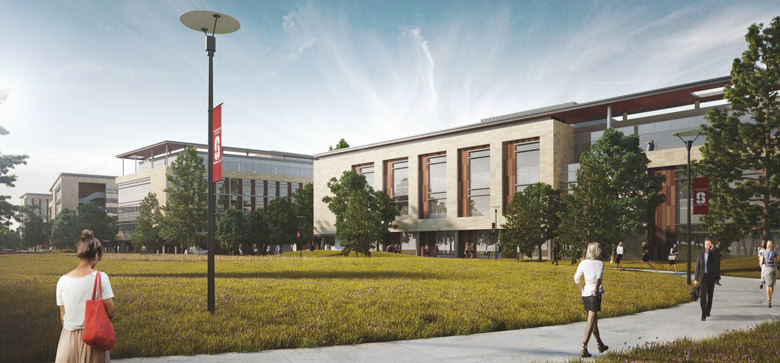The Board of Trustees, met on Tuesday, Dec. 8 to discuss the plans for a new campus expansion, as well as other pertinent issues.
The briefing was headed by Board of Trustees chairman Steven A. Denning MBA ’78, who revealed more about the new campus in Redwood City.
“We gave design approval to the first phase of Stanford in Redwood City,” Denning said. “We expect to grant construction approval in October 2016.”
“This is the first major expansion of the University outside of our 8,180-acre campus,” he added. “We’re building a little over 600,000 square feet, and we’ve got 1.5 million square feet [in total] already approved.”
The new campus is a 35-acre complex that will be located five miles from the main campus off of Highway 101 near the intersection of Woodside Road and Broadway, according to a recent Stanford News article.
According to Denning and the same article, the site will feature many amenities — modern offices, a pool, a fitness center, a park and a town square “quad.” Other features include BeWell programs, child care centers, shuttle service, traffic management systems and ample parking.
The project will hire between 2,200 and 2,400 employees across a variety of disciplines, said Denning.
These are employees who, according to Denning, “aren’t core to [Stanford’s] academic mission,” but are critical to the school’s logistic and finance management.
Among those whose offices will be relocated to the new campus is Randy Livingston, Stanford’s chief financial officer and University vice president for business affairs, according to the Stanford News article.
“This will free up corresponding space — teaching space — in core academic areas, [including] certain areas of the Stanford Research Park,” Denning said.
The land for the Redwood City Camps was purchased 11 years ago by the Board.
“We [were] at an all-time low point for real estate values here in the valley [in 2004],” Denning said. “We [saw] if we [could] find a spot where we [could] move some of our administrative functions.”
Denning and the Board of Trustees ended their overview of the Redwood City project by highlighting the Board of Trustees’s unique role in creating the Redwood City campus.
“Redwood City is a great example of an idea that emanated from the Board of Trustees,” Denning said.
“We’re trying to have [the new campus] feel like a part of Stanford because it is a part of Stanford,” he added.
The presidential search, sustainability efforts
The Board also discussed the continued search for a University president.
“We’re basically in the phase now of reviewing all the various nominees,” Denning said. “We’re now to a point where we’re beginning to call [people] on that list.”
Denning said the Board of Trustees is on track for an April or May announcement for a new president.
The Board also addressed Stanford’s plans for dealing with the possibility of a future earthquake.
“We would consider our single biggest risk the next earthquake,” Denning said. “It’s about a two-thirds risk that we will have an earthquake [in close proximity to Stanford] within the next 30 years.”
“We went through a variety of different scenarios to determine what kind of damage, business, interruptions and safety issues you would have under various magnitude of earthquakes,” he added.
The Board explained the steps Stanford is taking to address such a disruption.
“We’re currently building all of our buildings … to survive a reasonably [large] earthquake” Denning said. “We’re down to only one building on campus that is inadequate in withstanding an earthquake.”
“When you look at it from a public safety [and] engineering perspective, we’ve made phenomenal progress,” he added.
In addition to earthquake preparations, Denning also addressed how Stanford would continue its water conservation efforts in the midst of California’s drought.
These plans include the creation of the Codiga Resource Recovery Center, which is a four-bay water purification facility that will provide Stanford with water from four different recycled sources — raw sewage, micro-screened sewage, secondary effluent and non-potable lake water.
“[The Codiga Center] is a testbed for water and energy resource recovery,” Denning said. “It’s a state-of-the-art water recycling program.”
“Construction began in 2014. Expect [the recovery center] to open early next year,” he added. “It can purify 30 liters of water per minute, which is a reasonably high capacity.”
This project comes in light of Stanford’s larger focus on self-reliance.
“The commitment to sustainability is something that [Stanford] takes very seriously,” Denning said. “We’re in a real leadership position globally about how we operate this university.”
Contact Stefan Lacmanovic at stefanl ‘at’ stanford.edu.
